Betty Tompkins
On a stormy and snowy day of November I meet with Betty Tompkins at the P.P.O.W Gallery on the opening day of her new exhibition “Will She Ever Shut Up”. The main room is filled with her recent framed works on paper collected from various books by her over the years. After we have a little tour around her works dating from 1970s to this day we sit for an interview talk about her views of the artworld and her ongoing art career.
Yasemin Vargi: There is a lineage of text through the history of your art practice. Can you tell me how this started and the ways in which it has evolved?
Betty Tompkins: You can see some of my earlier works from a number of years ago in the back room. These pieces are realistic, using the defining noun of whatever they are. For example if I wanted to depict a cow then I would repeatedly annotate the word cow, which created the form. This eventually led to my works based from the Bill of Rights and the Constitution. With these I was not trying to represent a three-dimensional object but a two dimensional document. The motivation for me to do them was that I had read an article that said high school and college students didn’t recognize these documents. I was amazed as I thought everybody knew by the time they were six. Our whole country is based on these two pieces of paper. I did the first one with pencil and it worked extremely well and I liked it. It was really hard to put language within language visually and was kind of a mind buster. I waited a few years before going back to the concept. However, eventually I did the rest of them that are exhibited now. After all this I let the whole idea of using text in my work go until I got the idea for the Women Words which I showed at Flag Art Foundation in 2016. It was an interactive exhibition where the general public were encouraged to write on index cards and through email and social media how they would describe women with complete freedom and anonymity.
Y.V: What was the process from retrieving these index cards and new information you gathered to then creating the ‘Women Words’ paintings?
B.T: At the Flag Art Foundation and Gavlak Gallery in La, we had set up tables, index cards, push pins, and markers so people could write their thoughts. Both Flag and Gavlak sent me the response cards . I waited a year or more to look at them. When I started opening up the packs and looking at the anonymous writings I realized what unbelievable things there were. When I read the card “ I’m going to Jackson Pollock all over her face ” I was like what is this, I really have to do something with these words. You can’t just let expressions like this just sit there.
Y.V: This must have been such an exciting journey finding all these gems written by these people you didn’t know. Where did your practice evolve from here as I imagine it must be addictive to want to keep going?
B.T: I wanted to extend the idea from the Women Words; I have used a lot of my imagery with language. Works would say words like pussy or cunt and they were small pieces. I decided to push this idea and made all the pieces in the middle room of the gallery, some of them are from the audience response cards. The one that says “She spoke on the condition of anonymity because she fears retaliation. ” that was from a newspaper that I have read at least ten times so far and it has become a standard thing to say therefore I had to make a painting about it. I realized in my studio in 2013 I had done three pieces on the pages from Taschen books and I had shown them once so they were framed. One day I looked at them and there was one in particular, a man peeking around a tree and a woman half dressed and I have written words on her. It was a creepy image and the function of the man and the woman in my piece was way different than their function in the original photo. I thought this was worth going into and that’s how I started. I have done 170 of them so far and I’m still very engaged in them and will continue to do them.
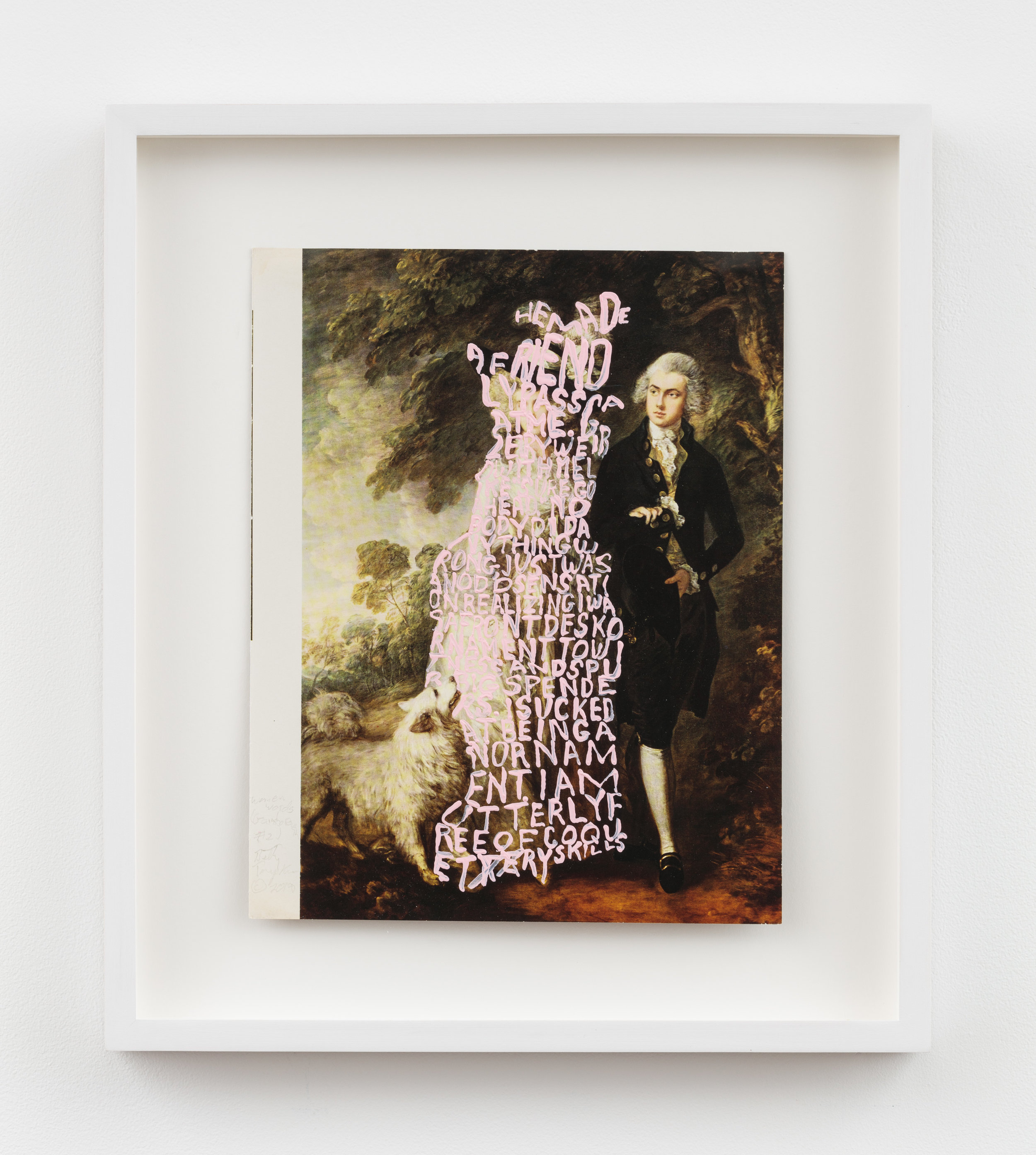
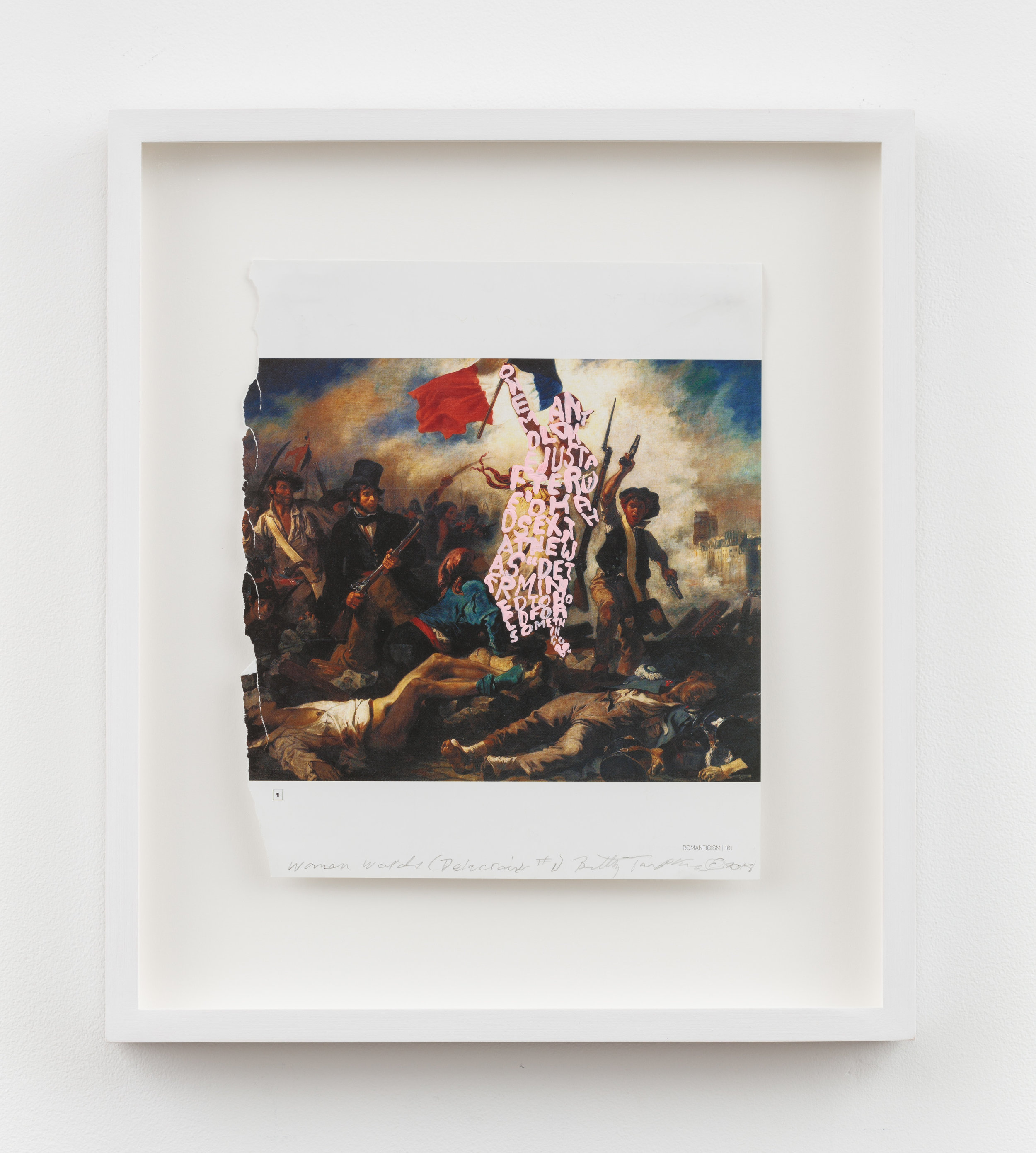
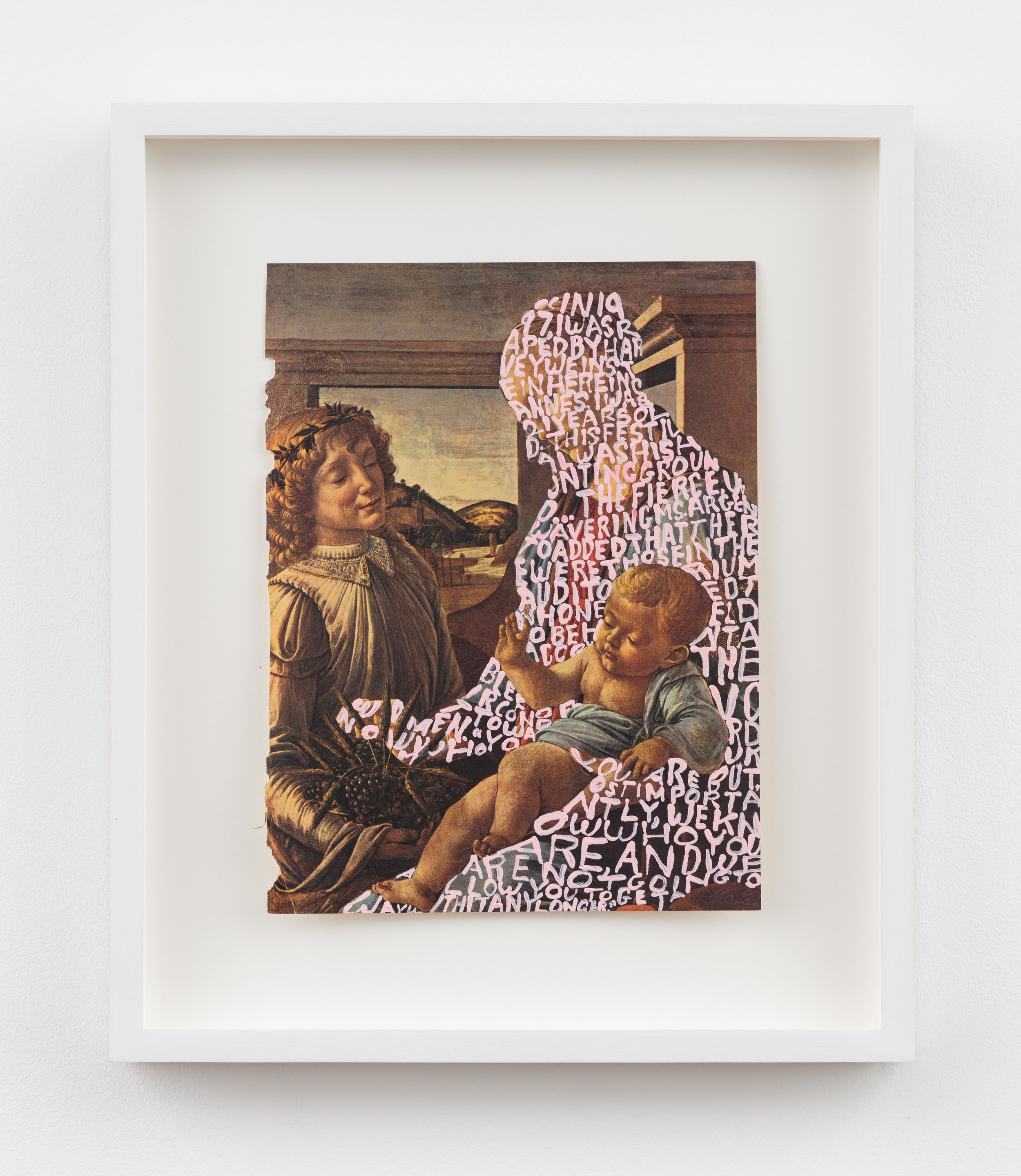

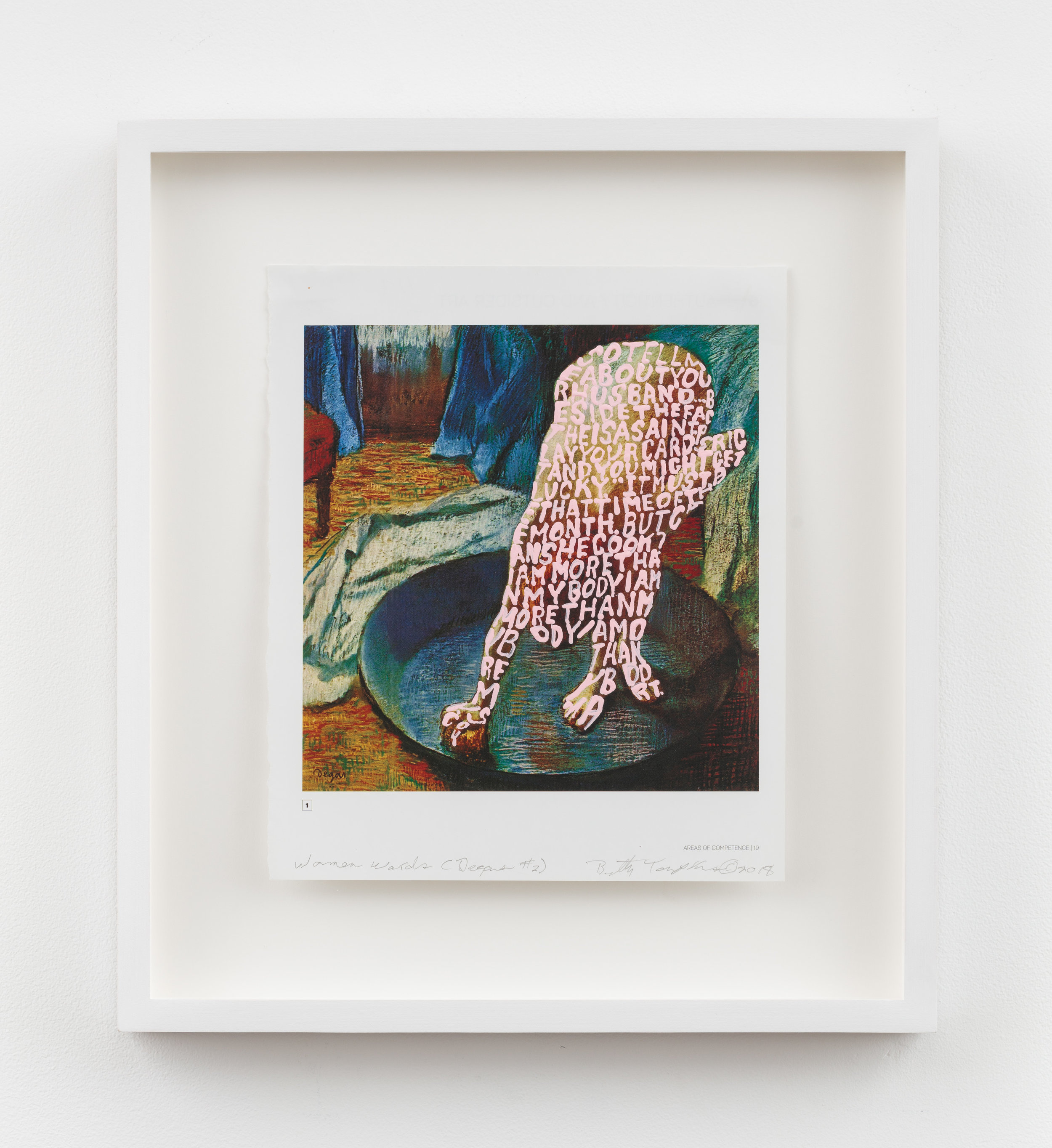
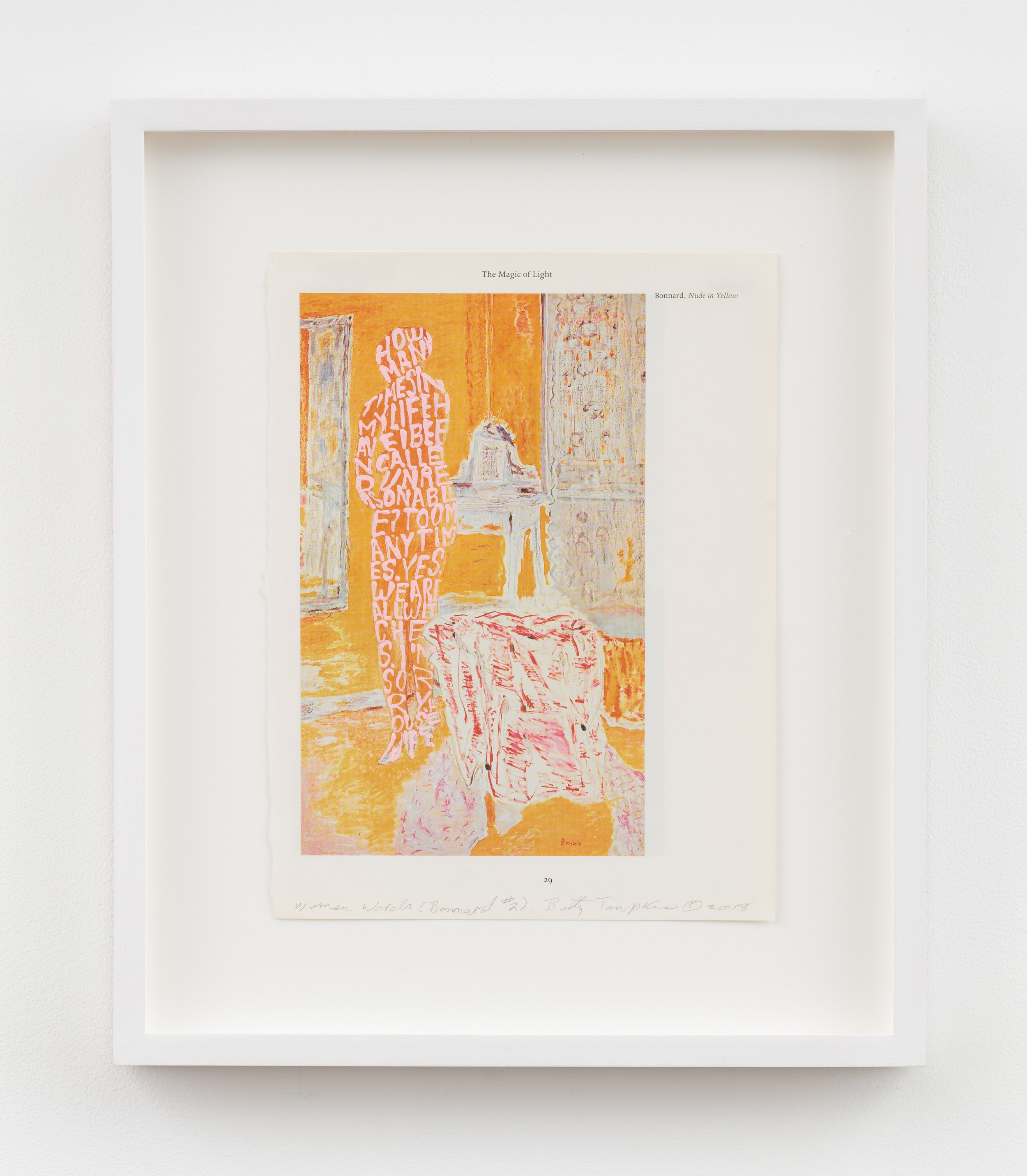
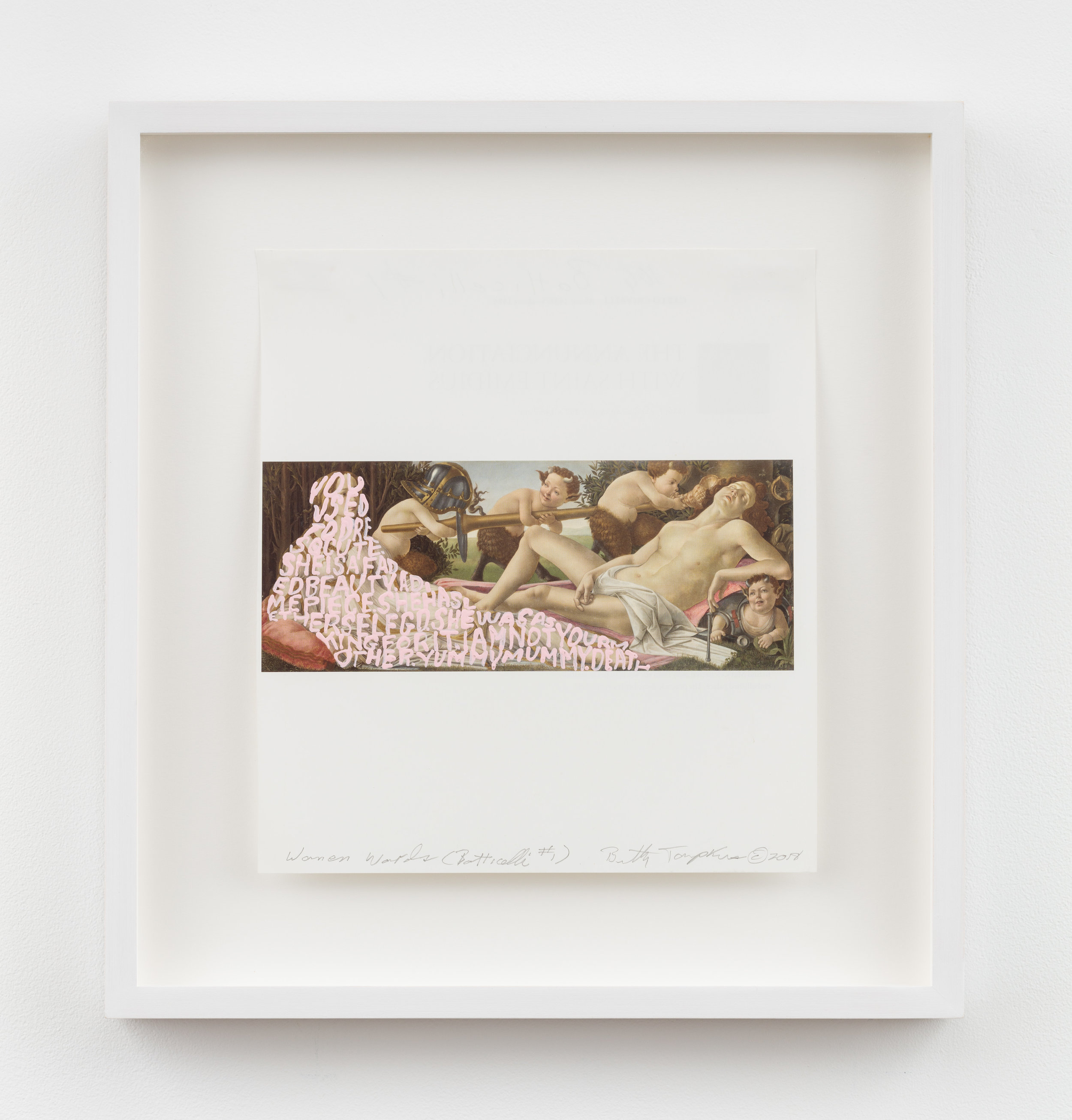
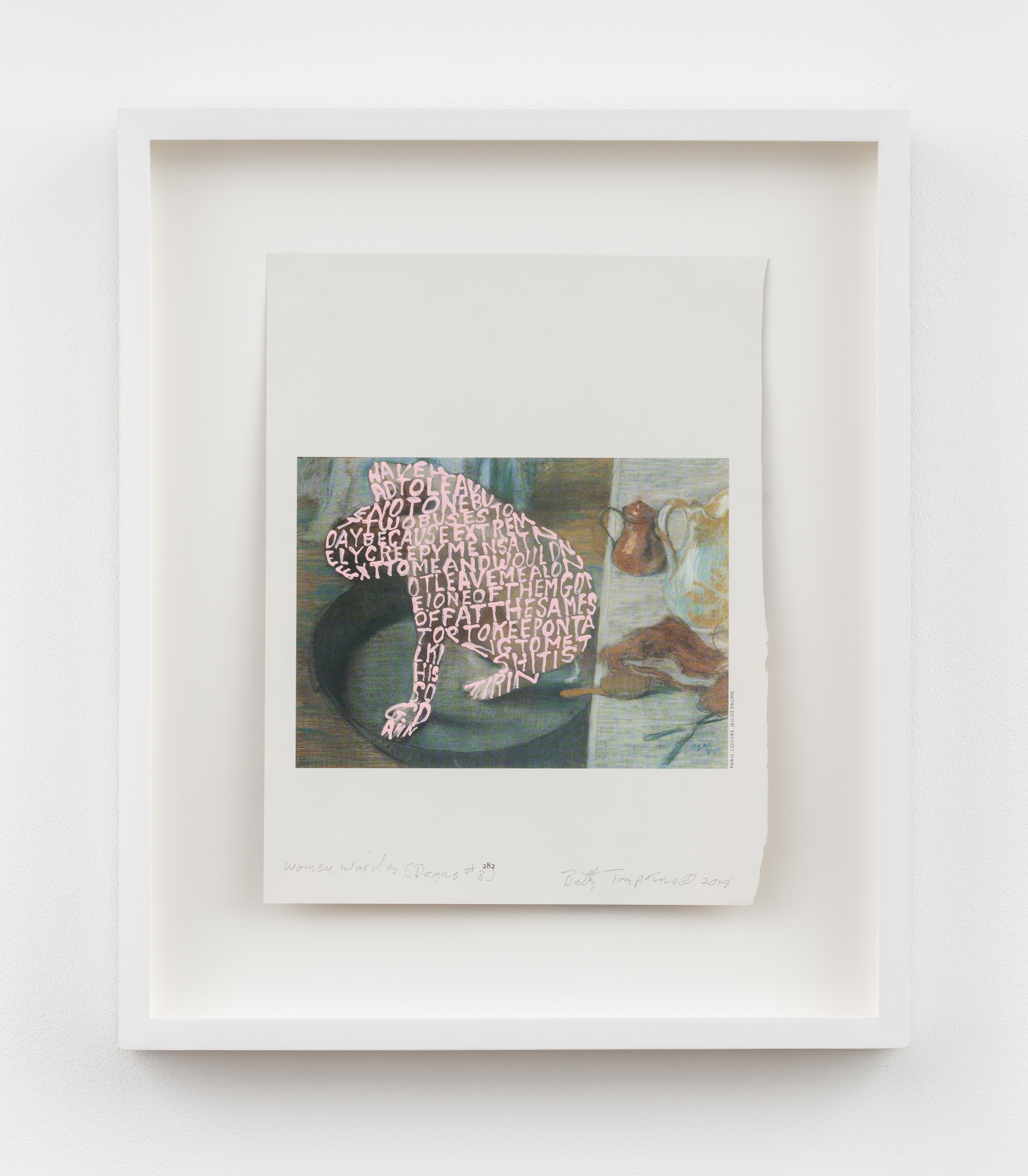
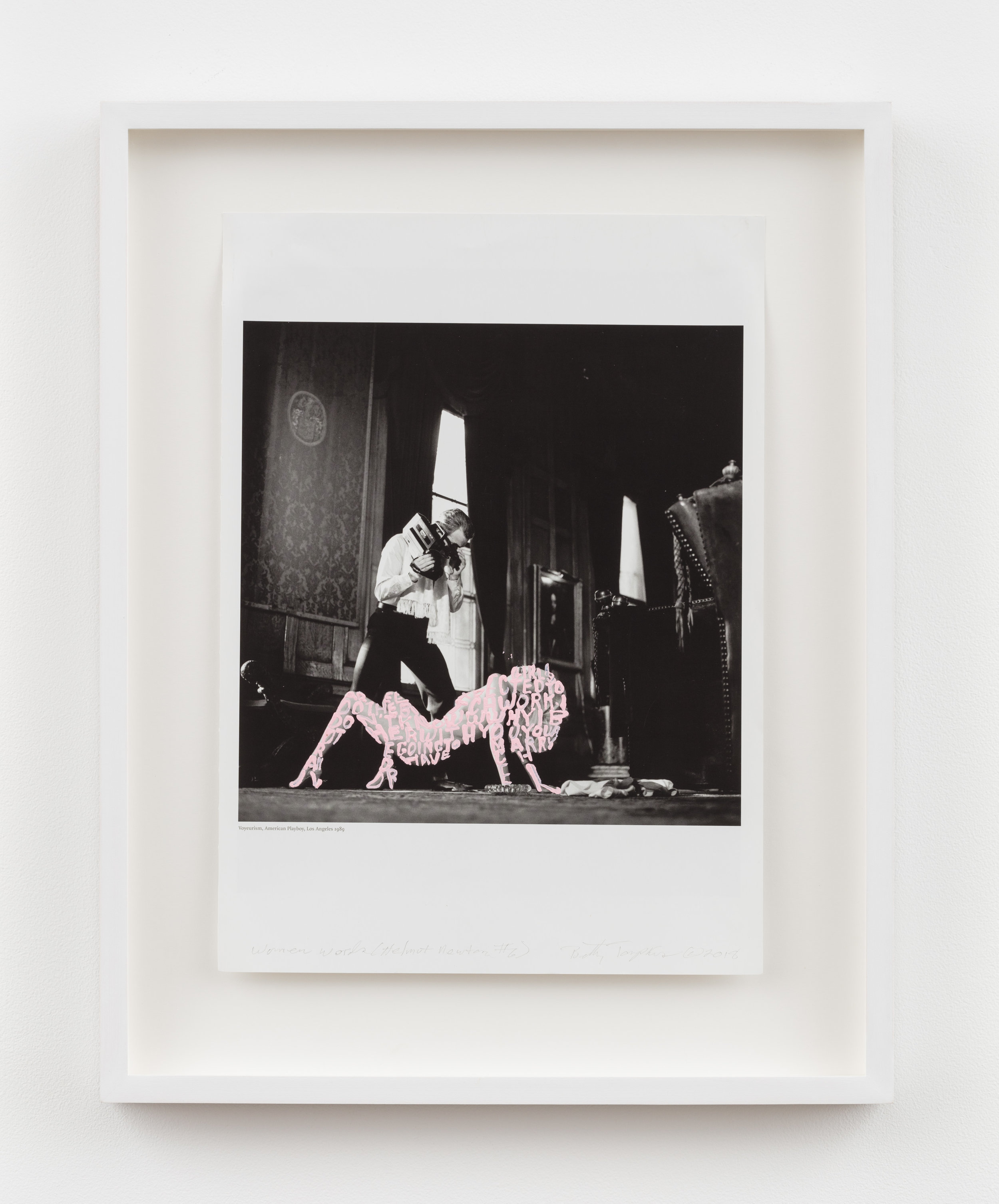
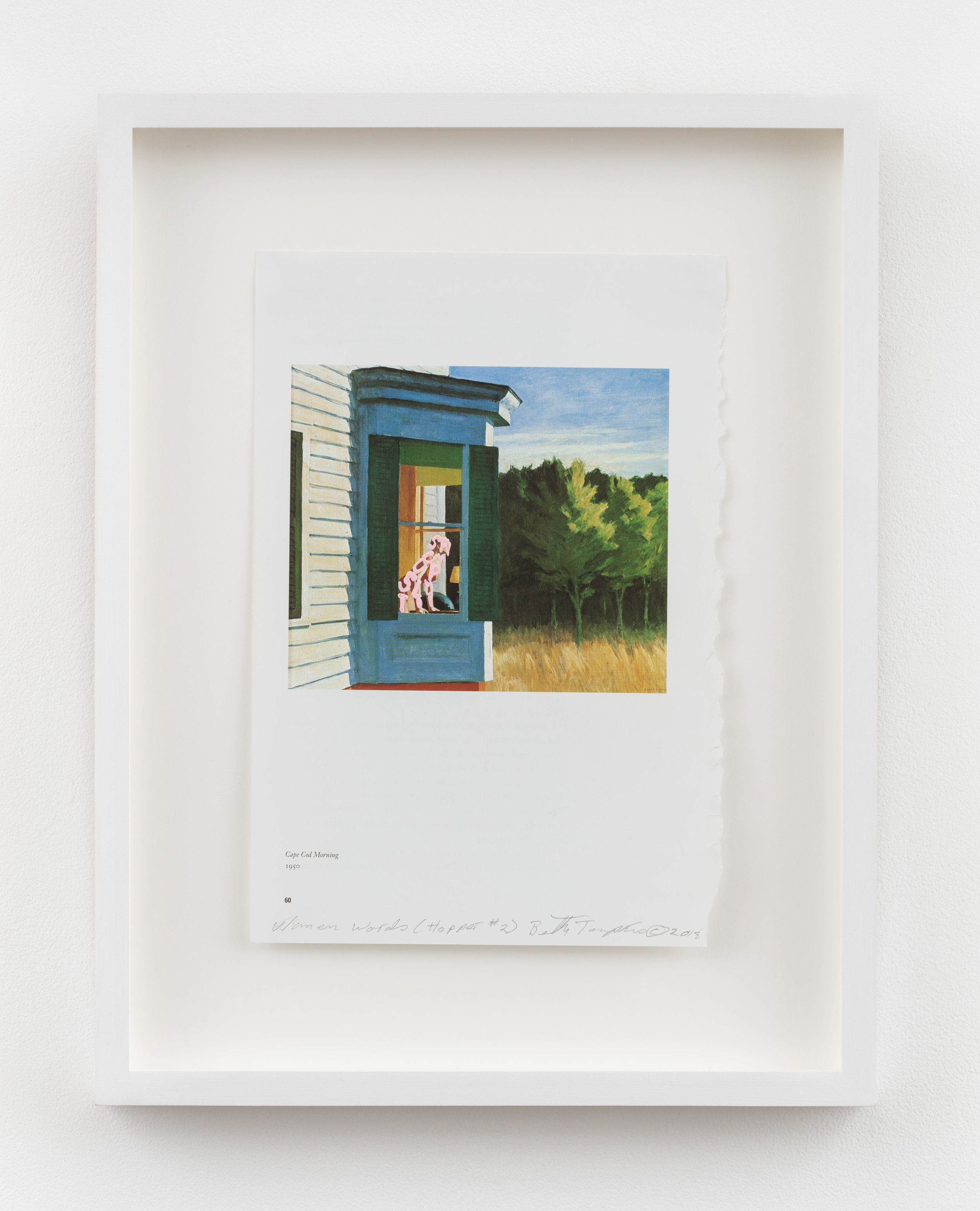
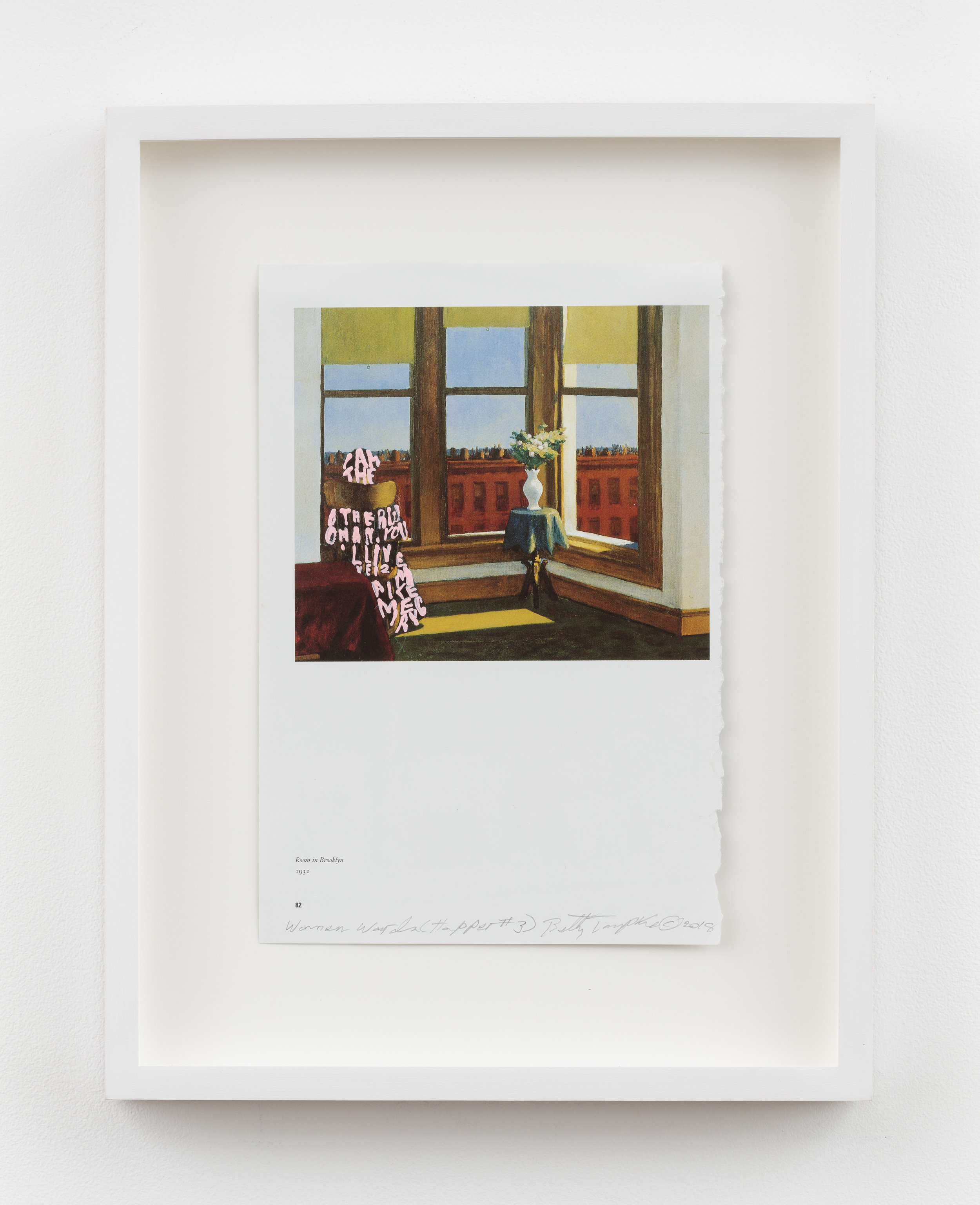

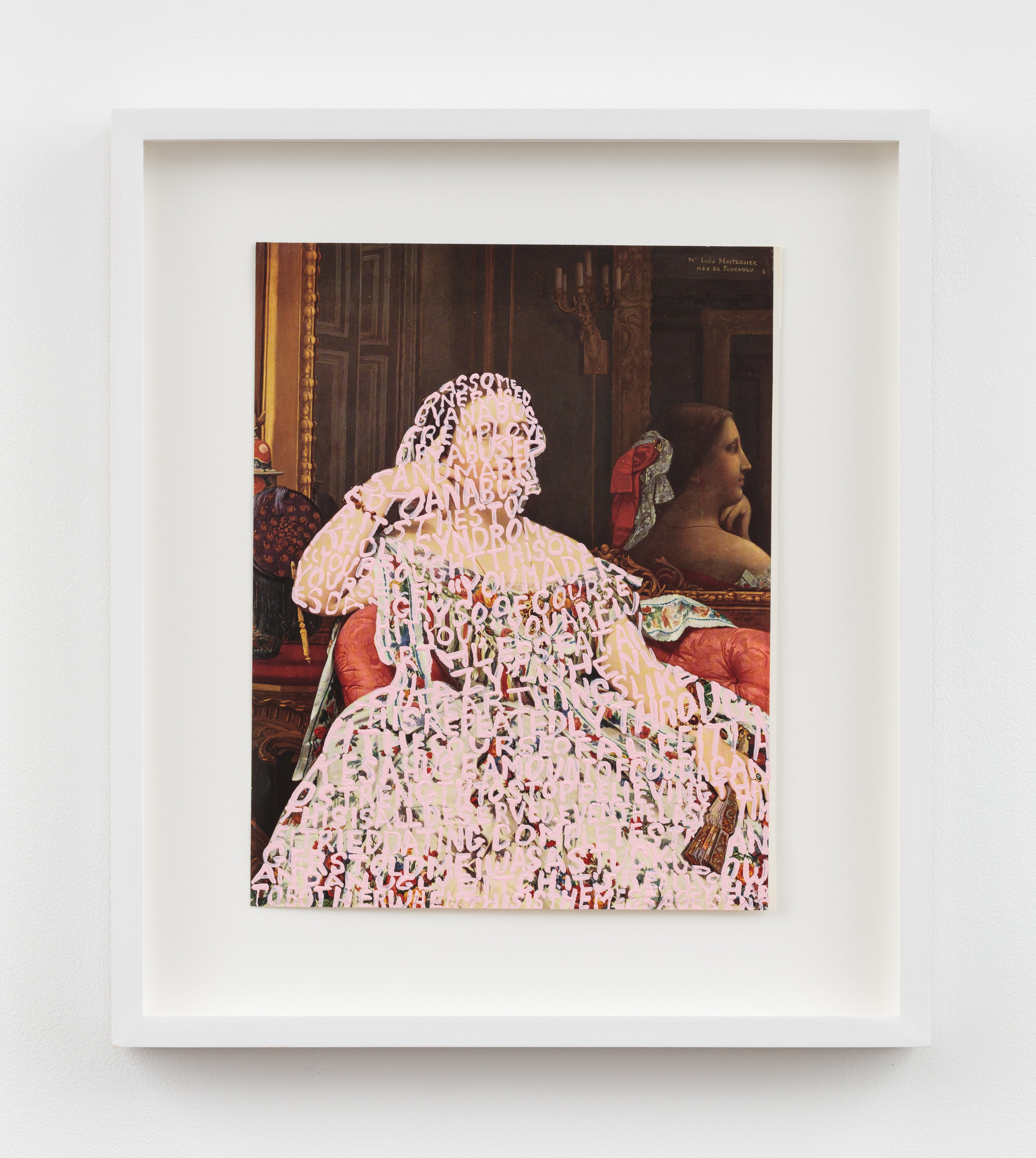
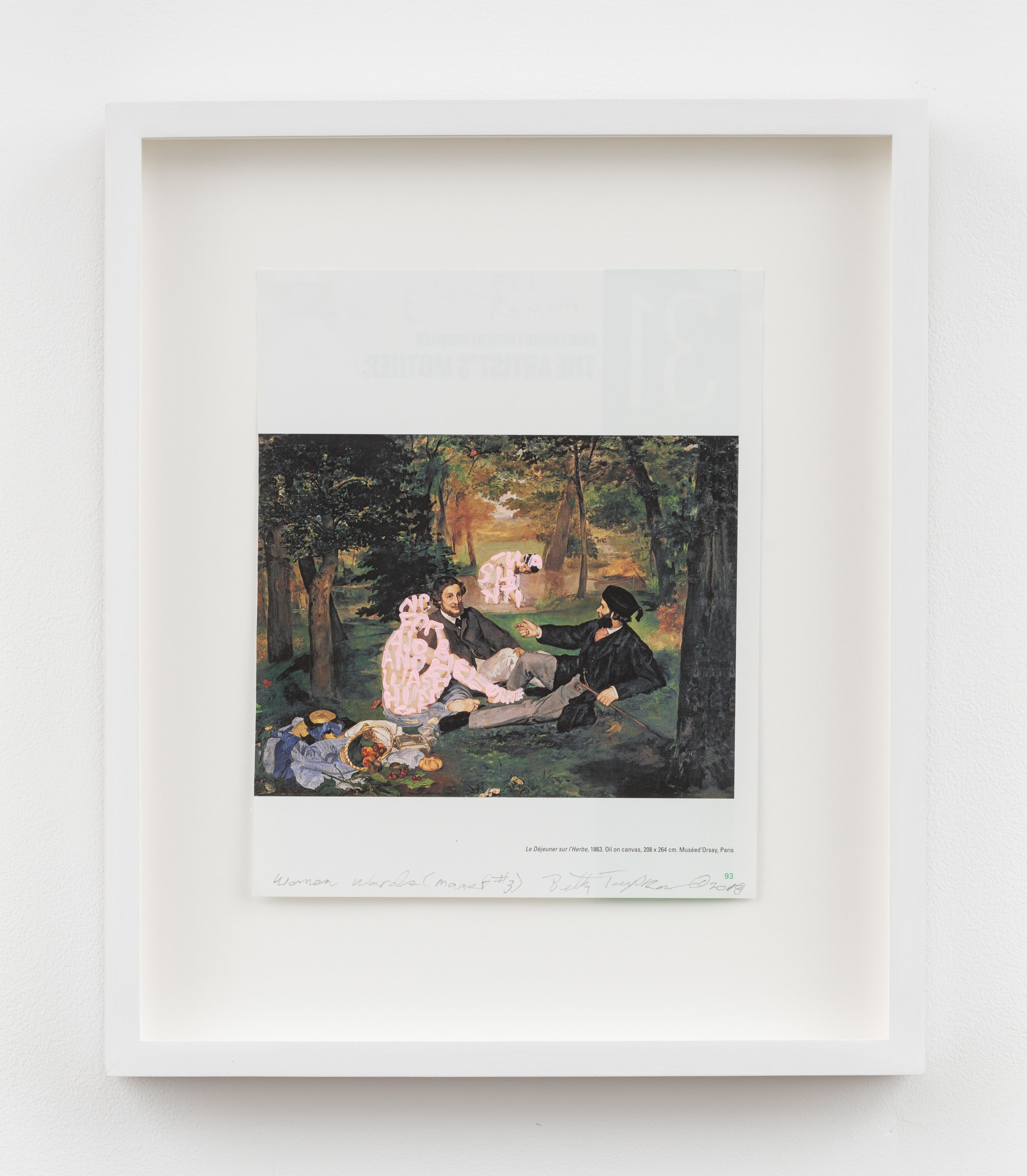
Y.V: Do you consider or care how people will react before you have executed your works?
B.T: When I work I honestly don’t think about the audience because it would stifle me. I ultimately do them for me and people can either like it or hate it and that is up to them. It may not always be the easiest position to take Ever since I started to show the Fuck Paintings and the sex works, I decided that the best thing would be to just let them go out in the world and let people decide what they think of them and that is what works for me.
Y.V: Why do you think the portrayal of genitalia and sexual matters found so obscene when they are visualized creatively?
B.T: You have to ask them not me because obviously I don’t see them as obscene. My goal is to have two things with them going on at the same time. I want to make a very beautiful painting. As a painting it must be abstractly beautiful and I will stand there day after day until I think I have achieved that. The other thing is it has to be in war with the subject matter If I can pull that off I can get a very edgy painting. It will work for me. I have had people look at my paintings and run out of the gallery screaming, sending nasty emails and postcards to the galleries that showed them, and that’s fine. What they are talking about is their reaction being their personal reaction that has nothing to do with what I do It is their issue. I didn’t paint it for them nor do I really care how they respond to it. I basically removed myself from the equation of it. I don’t defend my work or make statements about my work. It’s not easy when the audience or critics don’t get my works but no matter what I stick to this position.
Y.V: In your view are nudity and sexuality more accepted and even appreciated by society nowadays? As a female artist who doesn’t hold back in terms of sexual imagery do you think there is still prejudice and intolerance against it?
B.T: For me, it seems pretty much the same. It looks like things are changing but I don’t think they really are. It was this way when I was fifteen, now I’m seventy-three and I don’t see much difference. There are certainly more women in the art world taking ownership of their own image but ultimately that increase is because there are many more galleries not because the percentage of women showing has actually increased.

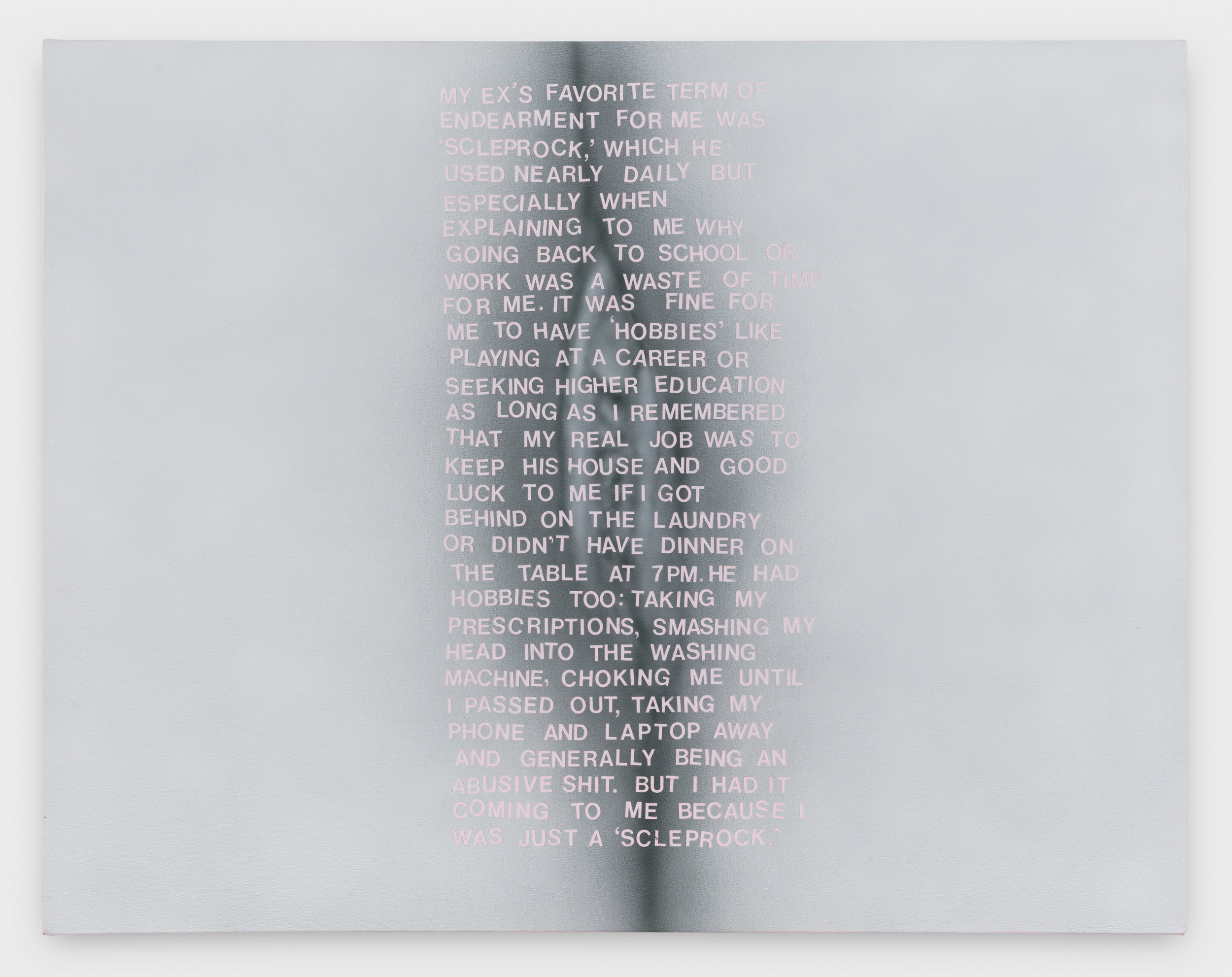
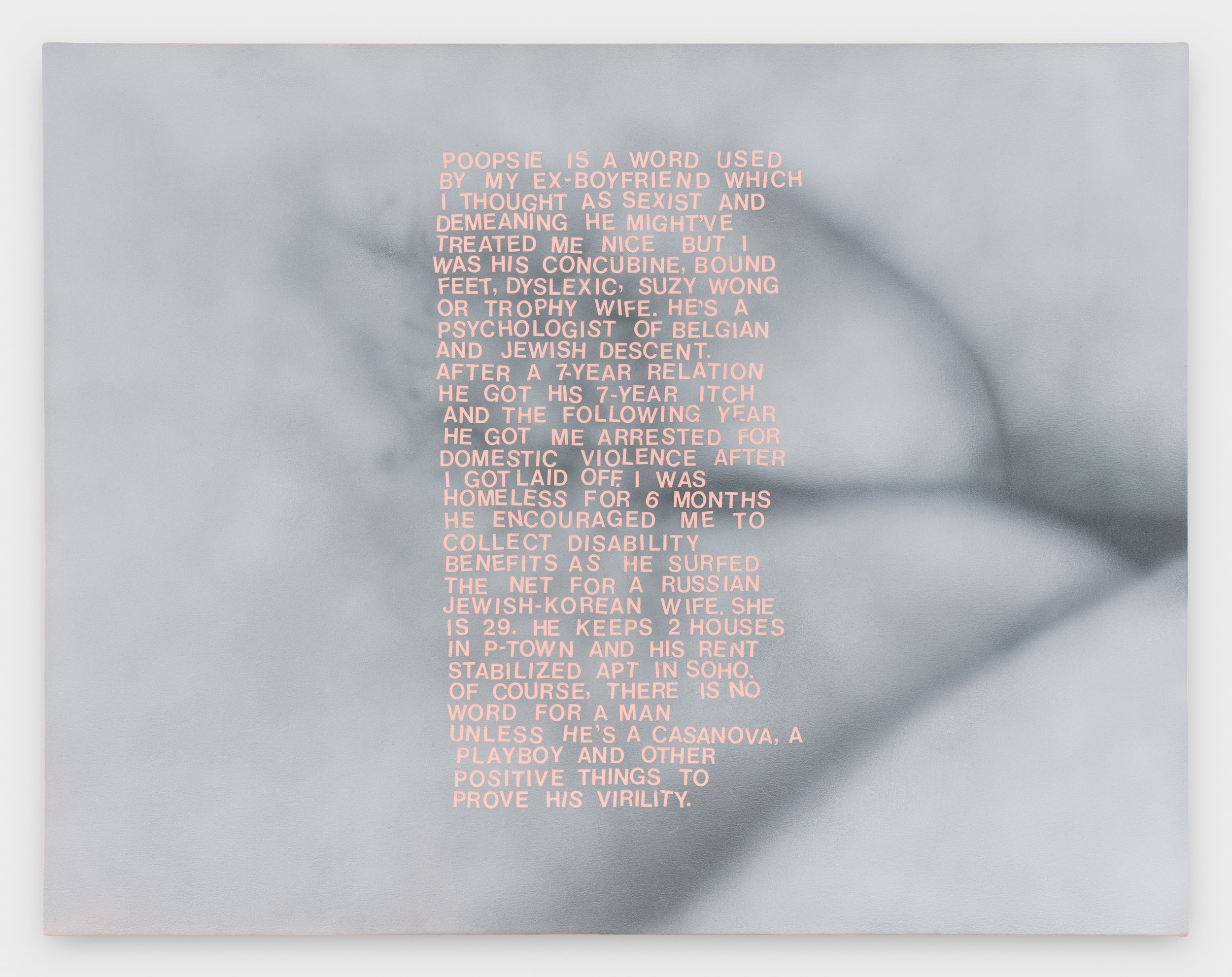
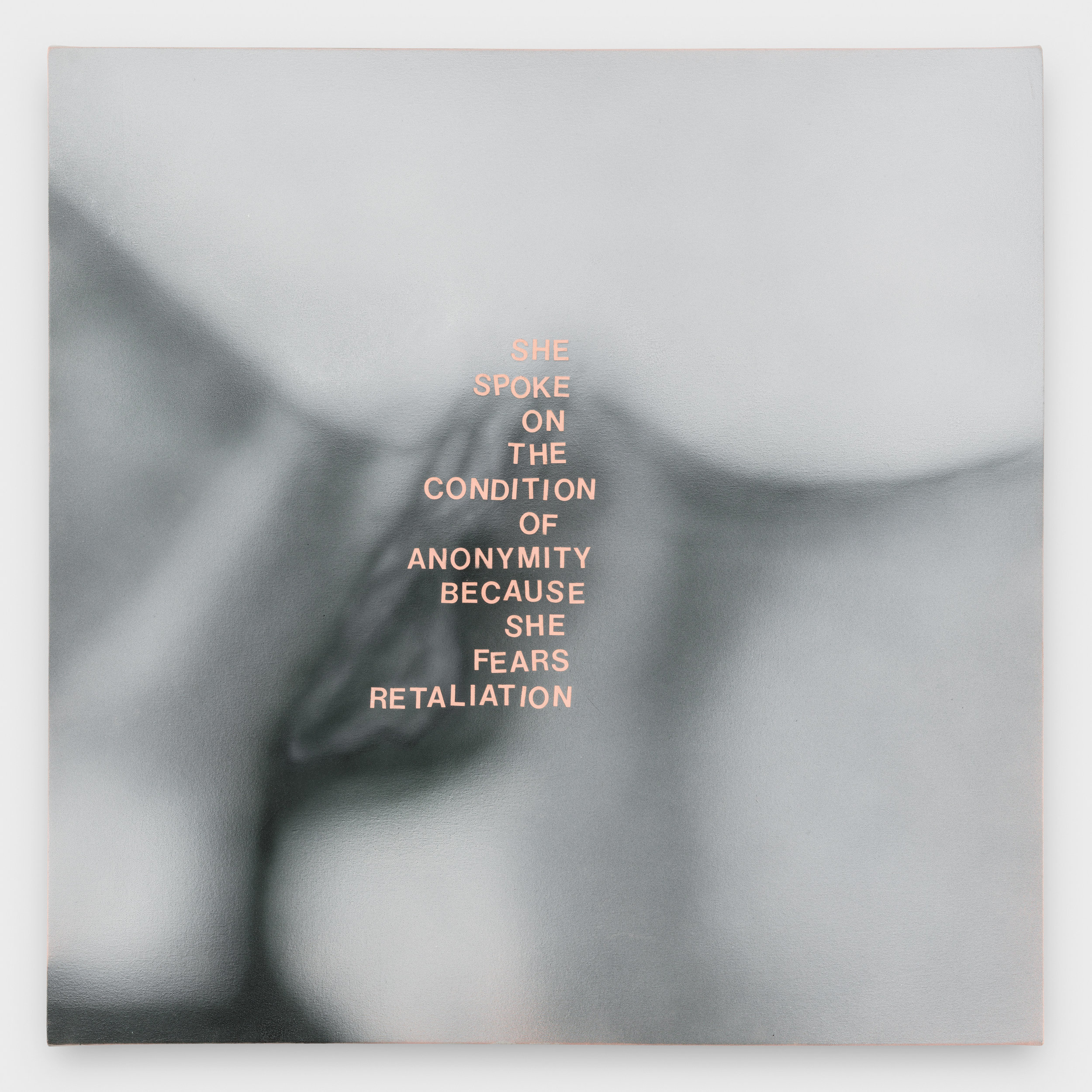
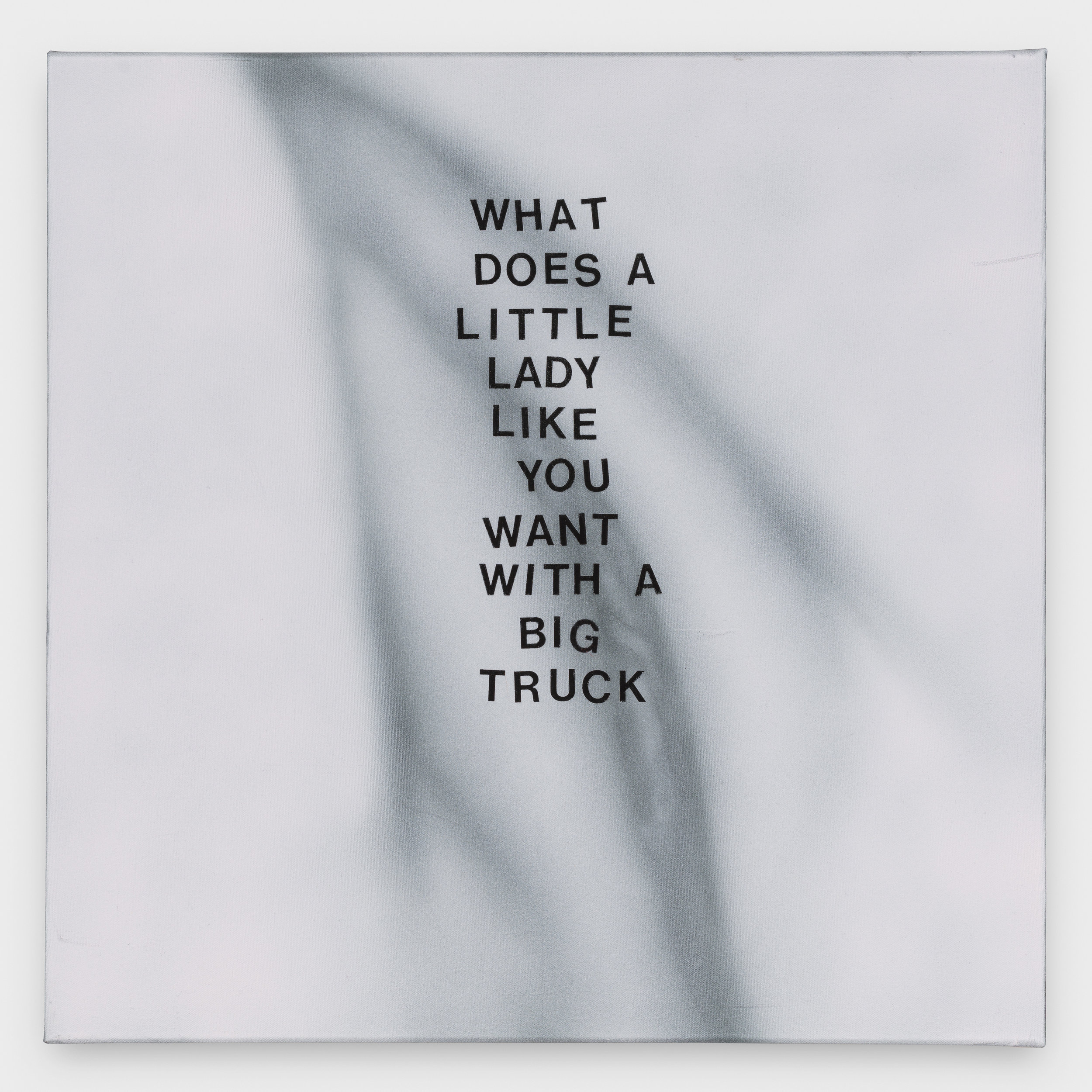


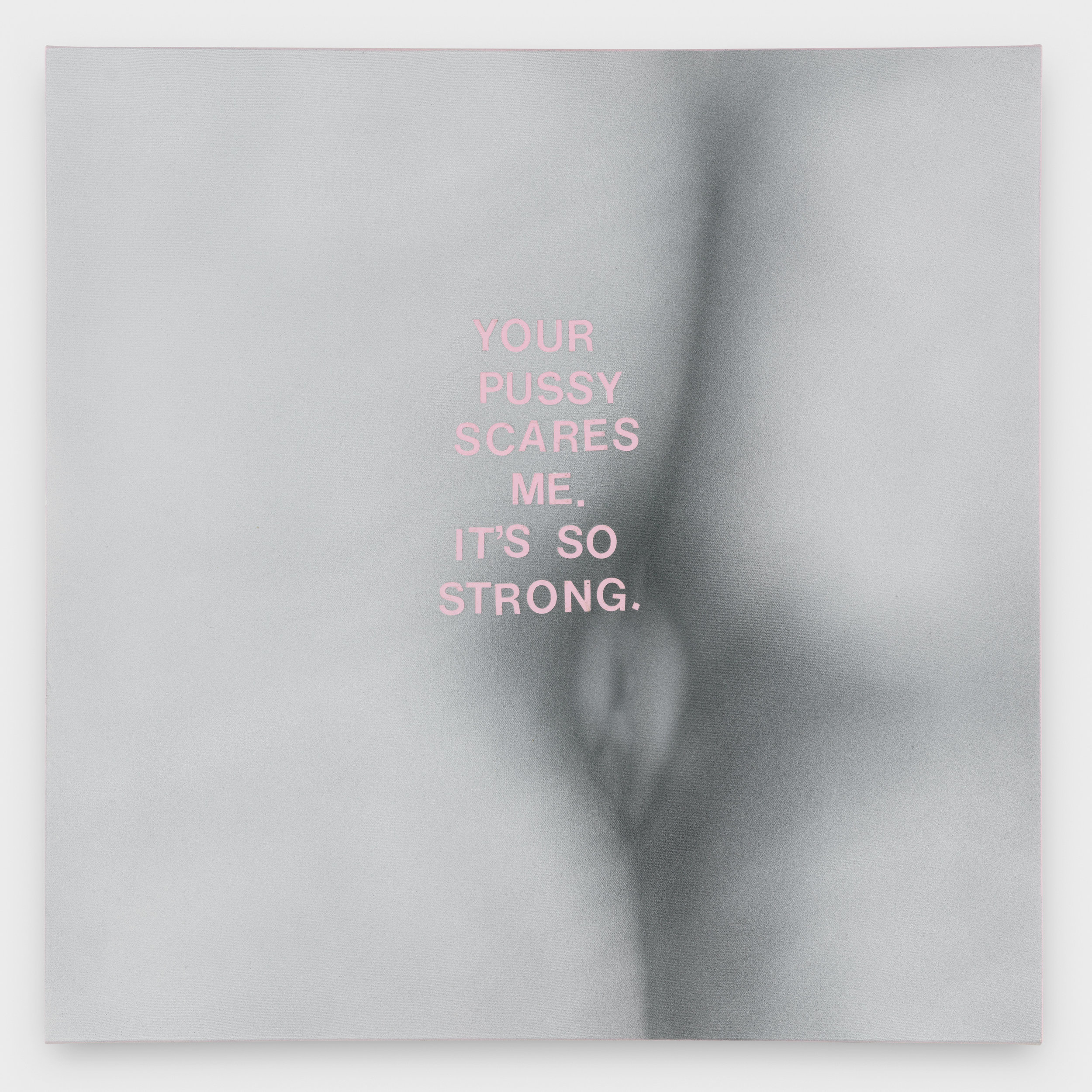

Y.V: The Apologia series features works that include apologies issued in response to accusations of sexual violence against women onto historical images. What was the initial idea behind creating these works?
B.T: It’s about men saying stupid things once they have been caught red-handed abusing their power. I got their words from newspapers and I enjoy feeling like the world is giving me my material. I could do hundreds of these since there is just endless material and it is impossible to imagine a world where this will stop. I love the juxtaposition of where the apology masks the image of the women with words.
Y.V: What do you think of men that describe themselves as feminists?
B.T: That is a great question. I’m glad to hear that they now do but their own actions will only define if they are or not. At this poınt I am willing to give them the benefit of doubt. When I was in my 20s, 30s and 40s I have never heard a man described himself as a feminist. For them to believe they truly want equality they have to step up and change the babies’ diapers, they have to wash the dishes, vacuum the floor and they have to say you look tired, I will make dinner. More importantly they have to stand up in public for women because it can’t all be only at home.
Y.V: How do you start the process of creating your monochrome close up paintings of sexual acts? Do you manipulate the images before you paint them?
B.T: I never paint directly from the images that I source from online or print and always manipulate them to a large degree. I never just print the source images which does not interest me. Sometimes it takes months before I say I can make a painting from the original image. I have a small amount of Photoshop skills and do whatever I can to make it mine. I flip, I crop, I change positions, take colored things and make them black and white. I have changed ethnicities and body parts. If I think this is a better dick for this painting than the dick that was there I will switch them.
Exhibition on view through December 22, 2018






